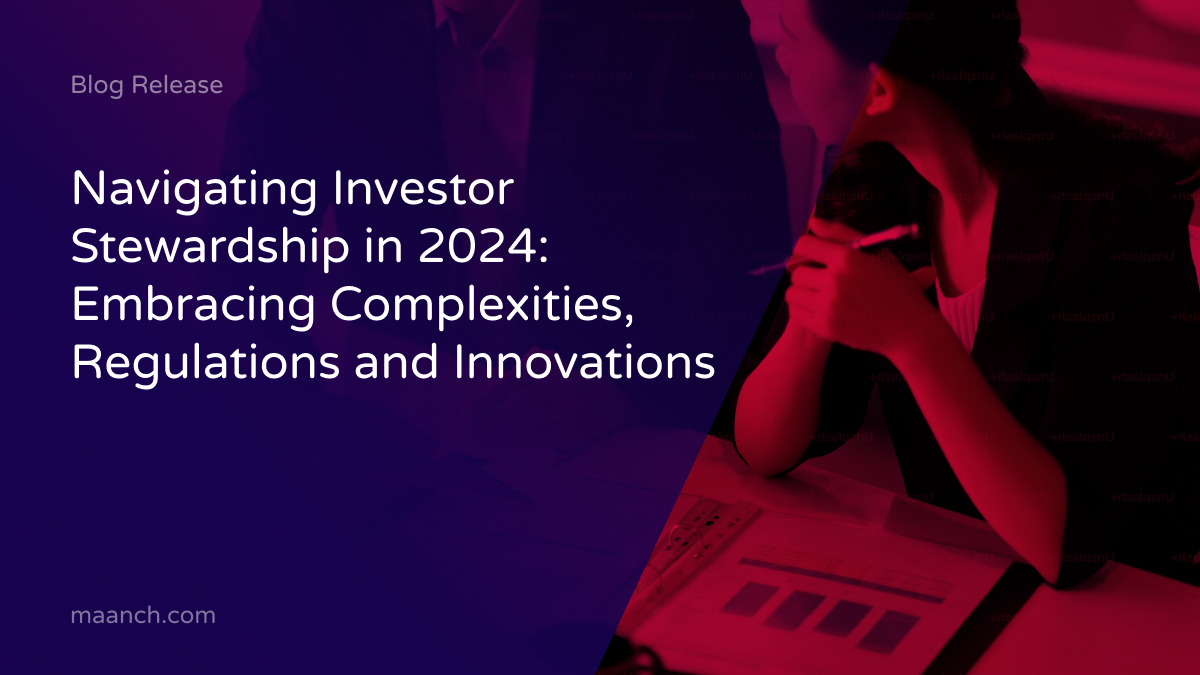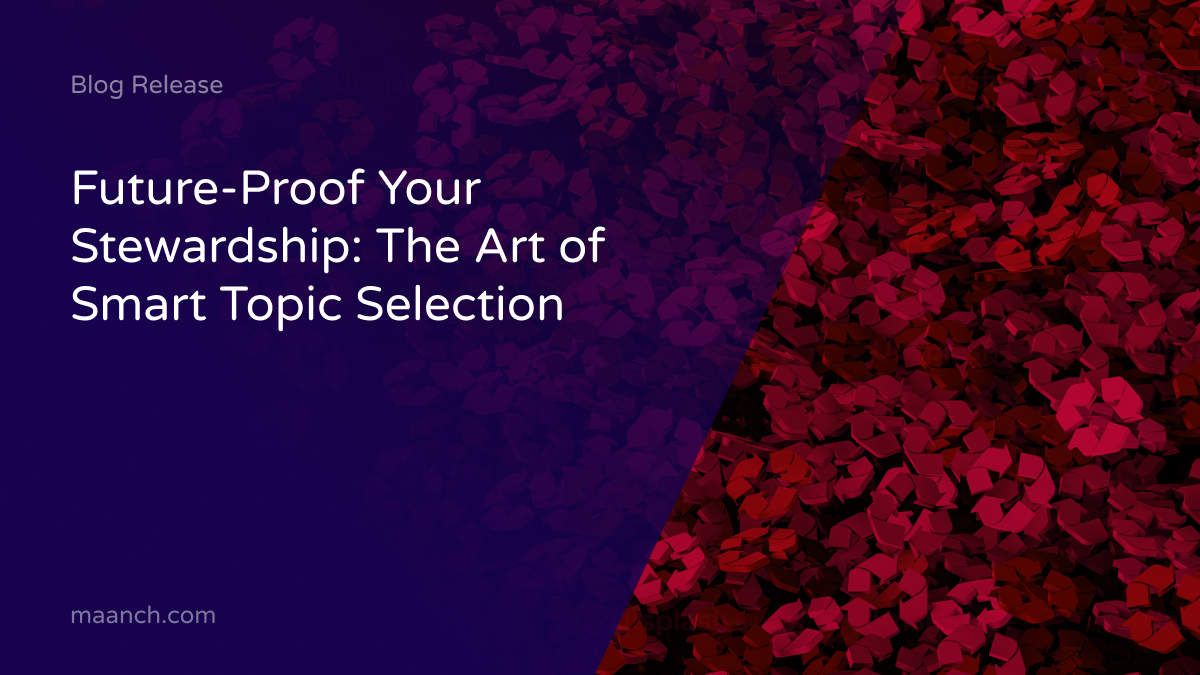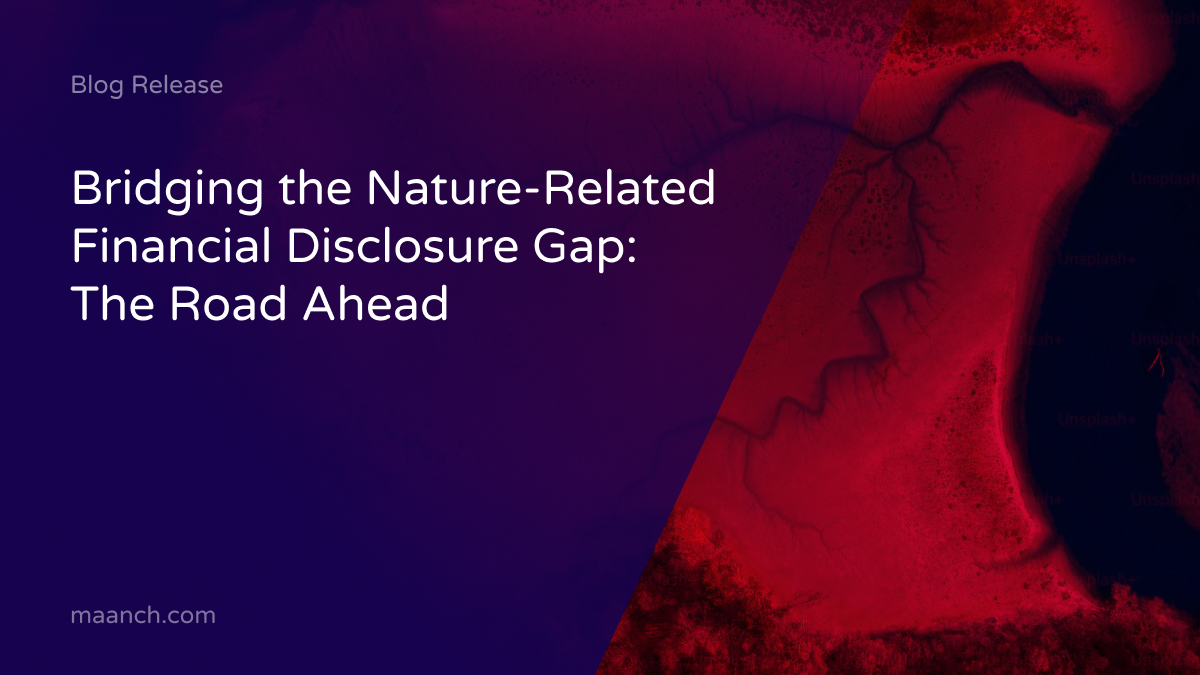The Impact Investing World Forum 2019 took place in London last week, bringing together over 250 delegates from around the world to hear from 25 industry experts over 2 days. Impact Investing, defined as investments “made into companies, organisations, and funds with the intention to generate social and environmental impact alongside a financial return” is a rapidly growing market – the Global Impact Investing Network estimates the current size of the global impact investing market to be $502 billion.
We were delighted to be a co-host of this insightful event, with Maanch’s Founder and CEO Darshita addressing the delegation on global SDG developments; the framework of needs; and using the data available from the global index to identify needs intensity in regions, in both developing countries and more advanced western economies. Shifting the world towards sustainability in all dimensions and aligning the industry on shared measurement framework is critical to ensure a commitment to improving conditions for people, planet, prosperity, peace and partnership beyond 2030.
We’ve selected five trends to emerge from the conference and taken a deeper look into them.
1. Metrics-Based Measurement Systems
Lack of alignment around impact measurement remains one of the biggest challenges and opportunities within the sector. We need a metrics-based system for impact measurement and management that enables data comparisons across an impact investing portfolio, but while we wait for regulation to catch-up with the advances made, there are multiple different data-sets and frameworks for capturing and measuring data being developed and used across the ecosystem, depending on geography and industry.
So what do we need to move the needle on this? The role of regulators in making data available, and setting standardised metrics, is critical, particularly in the climate change space. Having the data available at an individual level on areas like carbon exposure will accelerate behavioural change at the scale needed to address the environmental challenges we are facing at a planetary level. How policy makers and regulators respond to this need will be central to what information is made publicly available and how this is structured for high impact funds.
However, these standardised metrics also need to provide room for capturing the “other” data that is not part of the framework. The impact that a social enterprise has will be best identified and captured by them, and they need to have the room to communicate this impact if it sits outside of the standardised data requirements.
The measurable outcomes of DIBs are agreed at the outset and then independently verified on completion of the programme. Once case study Tom highlighted to show the success of DIBs is the ‘Educate Girls DIB’, the world’s first DIB in education, which led the way in encouraging private sector investment to fund development programs and was 100% focused on measurable impact. In August 2018, UBS published the results the Educate Girls DIB: 116% of the enrolment target and 160% of the learning target in its final year.
The DIB model has the potential to play an important role in both catalysing private capital alongside more traditional development efforts and achieving partnership between governments, donors, investors, firms and civil society.
Steps are already being made by Impact Management Project to align stakeholders across the ecosystem on what the tools for impact measurement should look like. Areas being considered include facilitated consensus, shared principles, tools for deciding on key metrics and how ratings can be transparent. Steps like these to align the sector are key in accelerating progress, and the more experienced voices that join the conversation, the quicker we will achieve the metrics-based measurement system the sector needs.
2. Development Impact Bonds
Tom Hall, Head of Philanthropy Services UK at UBS, identified Development Impact Bonds (DIBs) as a market expected to rapidly grow over the next 10 years. DIBs are a relatively new, results-based financing vehicle which fund programmes with money from private investors. The return they earn is paid for by a third-party donor if the programme is successful. DIBs are a welcome spin-off the Social Impact Bond (SIB) model, where the outcome payer is typically a private donor or aid agency rather than the government as with SIBs.
The measurable outcomes of DIBs are agreed at the outset and then independently verified on completion of the programme. Once case study Tom highlighted to show the success of DIBs is the ‘Educate Girls DIB’, the world’s first DIB in education, which led the way in encouraging private sector investment to fund development programs and was 100% focused on measurable impact. In August 2018, UBS published the results the Educate Girls DIB: 116% of the enrolment target and 160% of the learning target in its final year.
The DIB model has the potential to play an important role in both catalysing private capital alongside more traditional development efforts and achieving partnership between governments, donors, investors, firms and civil society.
3. The power of the millennial workforce
As the younger, millennial workforce experience the biggest wealth transfer in history, their belief in having a positive effect on the world being of equal value to making money demands more responsible and transparent activity from corporates. This creates great opportunities for businesses to align their purpose with their investments and to show a commitment to positive sustainable impact through their supply chain.
In 2018, in a letter that gained over 3,000 internal signatures, Google employees publicly objected to the company working on a Defense Department AI project entitled ‘Project Maven’ which led to the tech giant ending the contract with the military.
Amazon faced similar challenges from staff in another open letter which outlined concerns about Amazon’s facial recognition tool, Rekognition, when it was revealed the company was offering it to police departments and concerns were raised about civil liberties. The letter concluded with the following: “If we want to lead, we need to make a choice between people and profits. We can sell dangerous surveillance systems to police or we can stand up for what’s right. We can’t do both.” While Amazon went ahead and sold its facial recognition technology to law enforcement, Google’s scrapping of the defense contract highlights the power of the employee and the increasing importance of corporate commitment to sustainable investments with a positive social and environmental impact.
4. Democratising impact investing
Despite the estimated size of the market there is still a lack of awareness of impact investing outside of the early adopters, including asset managers, private investors, social entrepreneurs, family offices, and investment managers. There is a growing push towards democratisation within the space to not only enable more access to impact investment funds at an individual level, but increased marketing and communications that translate quite complex financial information into a consumer-friendly language that builds awareness and engagement. The Big Exchange is one business leading the charge on this, putting the investment power in the hands of the customer through it’s mobile-centric technology.
Another area with the potential to increase access into the space is ‘Pensions with Purpose’. In France, the solidarity investment fund has enabled significant numbers of individuals to make social investments through their long-term savings choices. The 90/10 model means employees are required to invest between 5 – 10% of their assets in accredited ‘solidarity-based enterprises of social utility’, with the savings reported to have reached €8.6bn by December 2017. There is a growing call within the UK impact investment space for a social investment fund that is fit for investment by pension funds on behalf of UK savers.
5. SDG whitewashing
Robert G. Eccles and Lila Karbassi in an article for MITSloan drew attention to the dangers of “corporate “SDG washing” (positively contributing to some of the SDGs while ignoring the negative impact of others)” and the risk this carries by potentially limiting a business’s contributions to the SDGs. Since the SDGs were launched in 2015 corporate engagement of the framework has been significant, with many aligning the goals and targets to corporate performance indicators. The visually attractive nature of how the SDGs have been branded has been successful in creating wide-spread engagement with potentially complex data, but also means every corporate wants to create a link to them and this risks diluting the genuine impact of the goals.
Eccles and Karbassi go on to state: “Under the guise of supporting the SDGs, tunnel vision (designing and measuring success against a single goal or, even worse, a single target under a goal) and myopia (setting a strategy without understanding the long-term sustainability agenda) may deliver weak or counterproductive contributions to the goals”. An impact measurement system which captures the net effect of business interventions across the SDG framework and value chain, and creates the data alignment and consistency needed, has yet to be implemented at a global level. This creates continued challenges to net impact measurement.
Conclusion
The impact investment space is growing quickly and we are already seeing the positive social and environmental outcomes created by the flow of funds. Alignment and consistency with impact measurement remains a core challenge, but significant steps are being taken to unite the ecosystem to deliver the solution to this, and the growth of models like DIBs add weight to the call for investments incentivised by measurement-based outcomes.
At Maanch, we believe philanthropy has an equally central role to play with impact. The democratisation of impact investment and calls for more information on, and access to, impact-focused funds reflects the trend we are seeing towards more strategic giving in response to the SDG framework. With the philanthropy and impact investing sectors working hand in hand, the flow of funds to not-for-profits and social enterprises will enable the scale needed to achieve long-term sustainable development.




